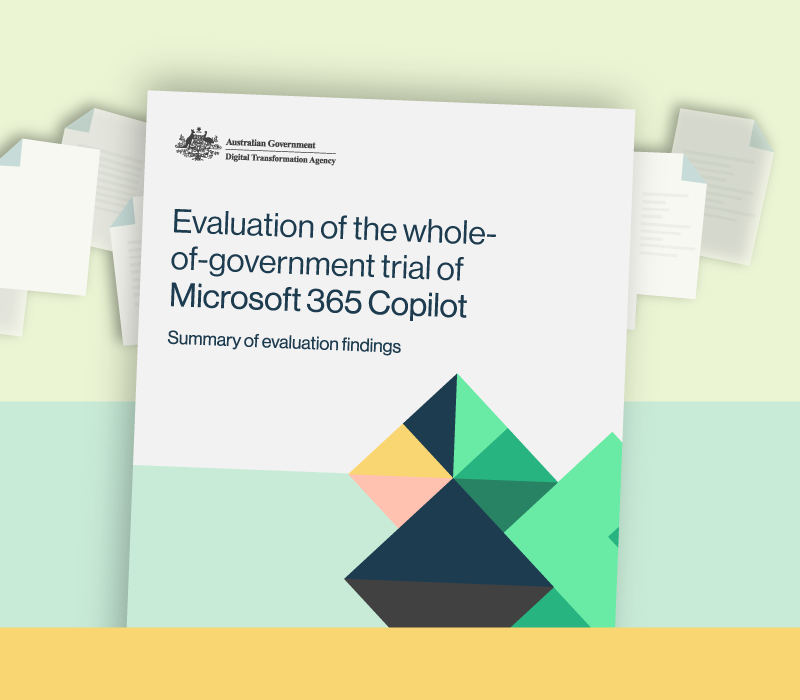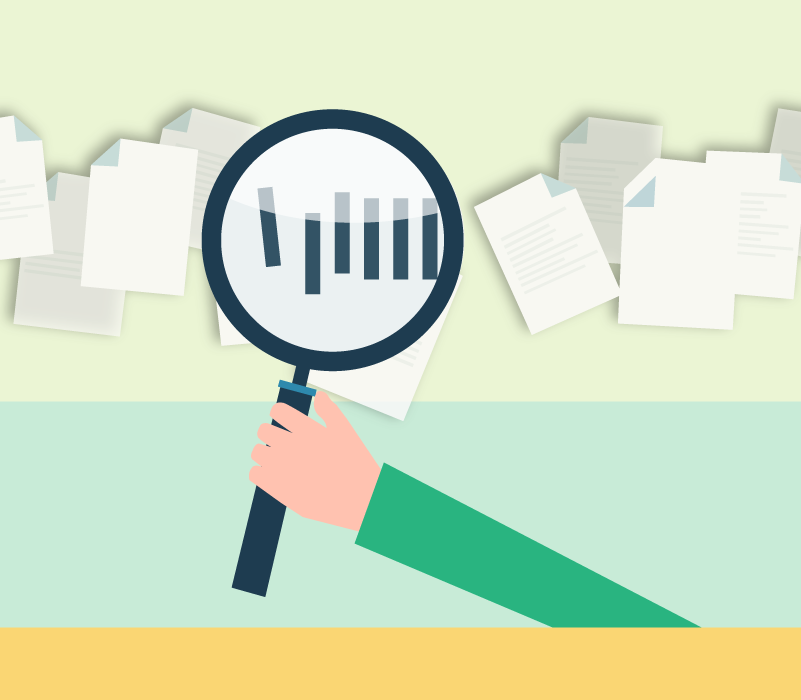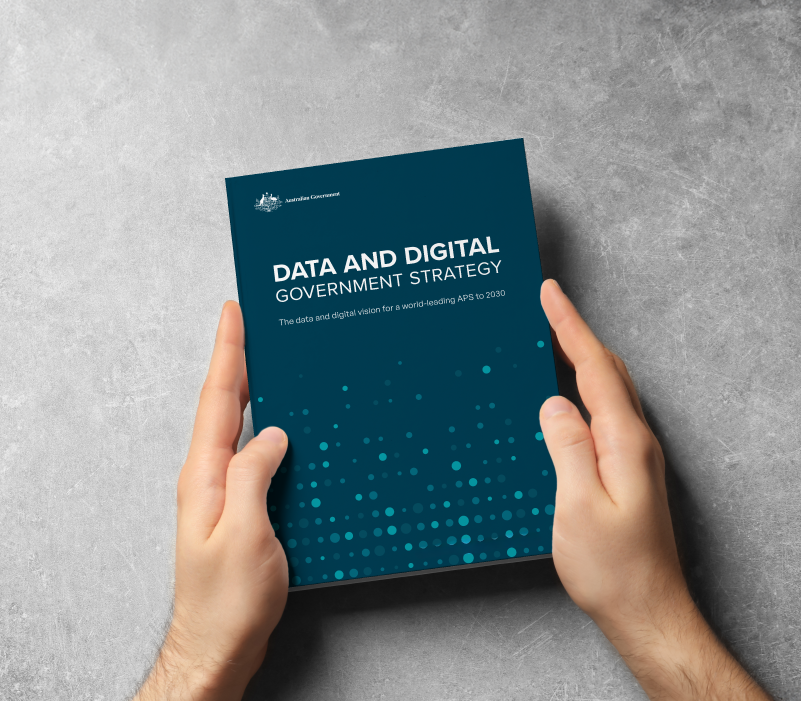-
Appendix B: Methodology
-
Appendix C
-
Appendix C: Agency participation in the evaluation
C1. Overall participation
Portfolio Entity Agriculture, Fisheries and Forestry Department of Agriculture, Fisheries and Forestry
Grains Research and Development Corporation
Regional Investment Corporation
Rural Industries Research and Development (trading as AgriFutures Australia)
Attorney-General’s Australian Criminal Intelligence Commission
Australian Federal Police
Australian Financial Security Authority
Office of the Commonwealth Ombudsman
Climate Change, Energy, the Environment and Water Australian Institute of Marine Science
Australian Renewable Energy Agency
Department of Climate Change, Energy, Environment and Water
Bureau of Meteorology
Education Australian Research Council
Department of Education
Tertiary Education Quality and Standards Agency
Employment and Workplace Relations Comcare
Department of Employment and Workplace Relations
Fair Work Commission
Finance Commonwealth Superannuation Corporation
Department of Finance
Digital Transformation Agency
Foreign and Trade Affairs Australian Centre for International Agricultural Research
Australian Trade and Investment Commission
Department of Foreign Affairs and Trade
Tourism Australia
Health and Aged Care Australian Digital Health Agency
Australian Institute of Health and Welfare
Department of Health and Aged Care
Home Affairs Department of Home Affairs (Immigration and Border Protection) Industry, Science and Resources Australian Building Codes Board
Australian Nuclear Science and Technology Organisation
Commonwealth Scientific and Industrial Research Organisation
Department of Industry, Science and Resources
Geoscience Australia
IP Australia
Infrastructure, Transport, Regional Development, Communication and the Arts Australian Transport Safety Bureau Parliamentary Departments (not a portfolio) Department of Parliamentary Services Social Services Australian Institute of Family Studies
National Disability Insurance Agency
Treasury Australian Prudential Regulation Authority
Australian Securities and Investments Commission
Australian Charities and Not-for-profits Commission
Australian Taxation Office
Department of the Treasury
Productivity Commission
C.2 Issue register participation
Eleven agencies contributed to the evaluation through the Copilot issues register.
Agency Number of contributions[1] Australian Building Codes Board < 5 Australian Centre for International Agricultural Research < 5 Australian Digital Health Agency 77 Australian Prudential Regulation Authority < 5 Bureau of Meteorology 20 Comcare < 5 Commonwealth Scientific and Industrial Research Organisation < 5 Department of Agriculture, Fisheries and Forestry 35 Department of Industry, Science and Resources 56 Digital Transformation Agency < 5 Regional Investment Corporation < 5 Note: A asterisk denotes less than 5 participants
C.3 DTA outreach interview participation
Twenty-four agencies contributed to the evaluation via DTA outreach interviews.
- AgriFutures
- Australian Charities and Non-for-profits Commission (ACNC)
- Australian Criminal Intelligence Commission (ACIC)
- Australian Centre for International Agricultural Research (ACIAR)
- Australian Federal Police (AFP)
- Australian Institute of Family Studies (AFIS)
- Australian Institute of Marine Science
- Australian Prudential Regulation Agency (APRA)
- Australian Research Council (ARC)
- Australian Tax Office (ATO)
- Bureau of Meteorology (BOM)
- Comcare
- Commonwealth Ombudsman
- Commonwealth Scientific and Industrial Research Organisation (CSIRO)
- Department of Agriculture, Fisheries and Forestry (DAFF)
- Department of Home Affairs
- Department of Industry, Science and Resources (DISR)
- Department of Education, Employment and Workplace Relations (DEEWR)
- Geoscience Australia
- Intellectual Property (IP) Australia
- National Disability Insurance Agency
- Parliament of Australia (APH)
- Regional Investment Corporation (RIC)
- Tertiary Education Quality and Standards Agency (TEQSA)
C.4 Nous focus group participation
Sixteen agencies contributed to the evaluation through Nous-facilitated focus groups.
Agency Number of participants Australian Charities and Not-for-profits Commission < 5 Australian Digital Health Agency 5 Australian Institute of Family Studies < 5 Australian Institute of Health and Welfare < 5 Australian Space Agency < 5 Australian Transport Safety Bureau < 5 Bureau of Meteorology 7 Commonwealth Superannuation Corporation 6 Department of Agriculture, Fisheries and Forestry < 5 Department of Health and Aged Care < 5 Department of Industry, Science and Resources 13 Department of Parliamentary Services < 5 Digital Transformation Agency < 5 Infrastructure Australia < 5 IP Australia 6 National Disability Insurance Agency < 5 C.5 Nous interview participation
Eight agencies contributed to the evaluation via Nous-facilitated interviews.
Agency Number of participants Commonwealth Scientific and Industrial Research Organisation < 5 Department of Customer Service (NSW) < 5 Department of Industry, Science and Resources < 5 Digital Transformation Agency < 5 Office for Women < 5 Office of the Australian Information Commissioner < 5 Productivity Commission < 5 Services Australia < 5 C.6 Pre-use survey participation
Thirty-six agencies contributed to the evaluation via the pre-use survey.
Agency Number of participants AgriFutures Australia 13 Australian Building Codes Board 7 Australian Centre for International Agricultural Research 17 Australian Charities and Not-for-profits Commission 23 Australian Criminal Intelligence Commission 12 Australian Digital Health Agency < 5 Australian Financial Security Authority < 5 Australian Institute of Family Studies 16 Australian Renewable Energy Agency < 5 Australian Research Council 13 Australian Securities and Investments Commission 108 Australian Taxation Office 159 Australian Trade and Investment Commission < 5 Australian Transport Safety Bureau 6 Bureau of Meteorology 60 Comcare 62 Commonwealth Ombudsman 7 Commonwealth Scientific and Industrial Research Organisation < 5 Commonwealth Superannuation Corporation 100 Department of Agriculture, Fisheries and Forestry 41 Department of Climate Change, Energy, Environment and Water < 5 Department of Education 46 Department of Employment and Workplace Relations 57 Department of Finance < 5 Department of Health and Aged Care 125 Department of Home Affairs 93 Department of Industry, Science and Resources 163 Department of Parliamentary Services 53 Digital Transformation Agency 116 Fair Work Commission 8 Fair Work Ombudsman 7 Geoscience Australia 44 Grains Research and Development Corporation 14 IP Australia 37 Productivity Commission 10 Regional Investment Corporation < 5 Tertiary Education Quality and Standards Agency 11 C.7 Post-use survey participation
Twenty agencies contributed to the evaluation via the post-use survey.
Agency Number of participants Australian Building Codes Board 5 Australian Charities and Not-for-profits Commission 8 Australian Criminal Intelligence Commission 21 Australian Digital Health Agency 48 Australian Institute of Family Studies 8 Australian Nuclear Science and Technology Organisation < 5 Australian Radiation Protection and Nuclear Safety Agency 17 Australian Securities and Investments Commission 98 Australian Taxation Office 90 Australian Transport Safety Bureau < 5 Bureau of Meteorology < 5 Department of Education < 5 Department of Employment and Workplace Relations < 5 Department of Finance 107 Department of Health and Aged Care 60 Department of Home Affairs 10 Department of Industry, Science and Resources 142 Digital Transformation Agency 55 Infrastructure Australia 11 IP Australia 50 National Disability Insurance Agency 87 -
Appendix D
-
Appendix D: Survey participation by APS classification and job family
D.1 Survey participation by APS classification
Percentage of all APS employees (%) Percentage of pre-use survey respondents (%) Percentage of post-use survey respondents (%) SES 1.9 4.7 5.3 EL 2 9.0 20.0 20.2 EL 1 20.8 36.9 34.0 APS 6 23.4 23.4 22.3 APS 5 14.7 8.5 9.6 APS 3-4 26.0 6.0 7.4 APS 1-2 4.2 10.5 1.1 D.2 Survey participation by APS job family
Percentage of all APS employees (%) Percentage of pre-use survey respondents (%) Percentage of post-use survey respondents (%) Accounting and Finance 5.1 5.3 3.5 Administration 11.4 9.0 8.9 Communication and Marketing 2.5 4.9 5.8 Compliance and Regulation 10.3 6.6 6.5 Data and Research 3.7 9.9 8.3 Engineering and Technical 1.8 1.3 1.5 Human Resources 3.9 5.3 5.0 ICT and Digital Solutions 5.0 19.6 22.3 Information and Knowledge Management 1.1 2.5 1.6 Intelligence 2.4 0.9 2.1 Legal and Parliamentary 2.6 4.1 3.5 Monitoring and Audit 1.5 1.1 1.0 Policy 7.9 13.7 14.4 Portfolio, Program and Project Management 8.3 8.6 7.5 Science and Health 4.2 1.6 2.1 Senior Executive 2.1 2.3 1.5 Service Delivery 25.5 2.7 4.0 Trades and Labour 0.7 0.9 - -
Appendix E
-
Appendix E: Agency reports and evaluations
Agency Report Australian Tax Office (ATO) Microsoft 365 Copilot trial Update Commonwealth Scientific and Industrial Research Organisation (CSIRO) Copilot for Microsoft 365; Data and Insights Department of Home Affairs (Home Affairs) Copilot Hackathon Department of Industry, Science and Resources (DISR) DISR Internal Mid-trial Survey Insights -
Appendix F
-
Read the summary report
-
Executive summary
Preface
The uptake of publicly available generative artificial intelligence (AI) tools, like ChatGPT, has grown. In the few years since its public introduction, generative artificial intelligence has become available and accessible to millions.
This meant the Australian Public Service (APS) had to respond quickly to allow its workforce to experiment with generative AI in a safe, responsible and integrated way. To make this experimentation possible, an appropriate generative AI tool needed to be selected.
This decision was dependent on:
- how swiftly and seamlessly the tool could be deployed for rapid APS experimentation purposes
- the ability for staff to experiment and learn using applications familiar to them.
One solution to enable the APS to experiment with safe and responsible generative AI was Microsoft 365 Copilot (formerly Copilot for Microsoft 365). On 16 November 2023, the Australian Government announced a 6-month whole-of-government trial of Copilot. Copilot is a supplementary product that integrates with the existing applications in the Microsoft 365 suite and it’s nested within existing whole-of-government contracting arrangements with Microsoft. This made it a rapid and familiar solution to deploy.
Broadly, the trial and evaluation tested the extent the wider promise of generative AI capabilities would translate into real-world adoption by workers. The results will help the Australian Government consider future opportunities and challenges related to the adoption of generative AI.
This was the first trial of a generative AI tool in the Australian Government. The future brings exciting opportunities to understand what other tools are available to explore a broad landscape of use cases.
Overarching findings
-
Evaluation findings, approach and methodology
-
Evaluation findings
Employee related outcomes
- 77% were optimistic about Microsoft 365 Copilot at the end of the trial.
- 1 in 3 used Copilot daily.
- Over 70% of used Microsoft Teams and Word during the trial, mainly for summarising and re-writing content.
- 75% of participants who received 3 or more forms of training were confident in their ability to use Copilot, 28 percentage points higher than those who received one form of training.
Most trial participants were positive about Copilot and wish to continue using it
- 86% of trial participants wished to continue to use Copilot.
- Senior Executive Service (SES) staff (93%) and Corporate (81%) roles had the highest positive sentiment towards Copilot.
Despite the positive sentiment, use of Copilot was moderate
Moderate usage was consistent across classifications and job families but specific use cases varied. For example, a higher proportion of SES and Executive Level (EL) 2 staff used meeting summarisation features, compared to other APS classifications.
Microsoft Teams and Word were used most frequently and met participants’ needs. Poor Excel functionality and access issues in Outlook hampered use.
Content summarisation and re-writing were the most used Copilot functions.
Other generative AI tools may be more effective at meeting users’ needs in reviewing or writing code, generating images or searching research databases.
Tailored training and propagation of high-value use cases could drive adoption
Training significantly enhanced confidence in Copilot use and was most effective when it was tailored to an agency’s context.
Identifying specific use cases for Copilot could lead to greater use of Copilot.
Productivity
- 69% of survey respondents agreed that Copilot improved the speed at which they could complete tasks.
- 61% agreed that Copilot improved the quality of their work.
- 40% of survey respondents reported reallocating their time for:
- mentoring / culture building
- strategic planning
- engaging with stakeholders
- product enhancement.
Most trial participants believed Copilot improved the speed and quality of their work
Improvements in efficiency and quality were perceived to occur in a few tasks with perceived time savings of around an hour a day for these tasks. These tasks include:
- summarisation
- preparing a first draft of a document
- information searches.
Copilot had a negligible impact on certain activities such as communication.
APS 3-6 and EL1 classifications and ICT-related roles experienced the highest time savings of around an hour a day on summarisation, preparing a first draft of a document and information searches.
Around 65% of managers observed an uplift in productivity across their team.
Around 40% of trial participants were able to reallocate their time to higher value activities.
Copilot’s inaccuracy reduced the scale of productivity benefits.
Quality gains were more subdued relative to efficiency gains.
Up to 7% of trial participants reported Copilot added time to activities.
Copilot’s potential unpredictability and lack of contextual knowledge required time spent on output verification and editing which negated some of the efficiency savings.
Whole-of-government adoption of generative AI
61% of managers in the pulse survey could not confidently identify Copilot outputs.
There is a need for agencies to engage in adaptive planning while ensuring governance structures and processes appropriately reflect their risk appetites.
Adoption of generative AI requires a concerted effort to address key barriers.
Technical
There were integration challenges with non-Microsoft 365 applications, particularly JAWS and Janusseal, however it should be noted that such integrations were out of scope for the trial. Note: JAWS is a software product designed to improve the accessibility of written documents. Jannusseal is a data classification tool used to easily distinguish between sensitive and non-sensitive information.
Copilot may magnify poor data security and information management practices.
Capability
Prompt engineering, identifying relevant use cases and understanding the information requirements of Copilot across Microsoft Office products were significant capability barriers.
Legal
Uncertainty regarding the need to disclose Copilot use, accountability for outputs and lack of clarity regarding the remit of Freedom of Information were barriers to Copilot use – particularly in regard to transcriptions.
Cultural
Negative stigmas and ethical concerns associated with generative AI adversely impacted its adoption.
Governance
Adaptive planning is needed to reflect the rolling release cycle nature of generative AI tools, alongside relevant governance structures aligned to agencies’ risk appetites.
Unintended outcomes
-
There’s a concern of vendor lock-in as the APS becomes more dependent on this tool.
Focus group participant -
It’s difficult to account for a bias that you are yet to identify.
Focus group participant -
Copilot could cause myself and colleagues to lack deep knowledge of topics.
Pre-use survey respondent -
Appendix
-
Approach and methodology
A mixed-methods approach was adopted for the evaluation.
Over 2,000 trial participants from more than 50 agencies contributed to the evaluation. The final report was written based on document/data review, consultations and surveys.
Document/data review
The evaluation synthesised existing evidence, including:
- government research papers on Copilot and generative AI
- the trial issue register
- 6 agency-led internal evaluations.
Consultations
It also involved thematic analysis through:
- 24 outreach interviews conducted by the DTA
- 17 focus groups facilitated by Nous Group
- 8 interviews facilitated by Nous Group.
Surveys
Analysis was conducted on data collected from:
- 1,556 respondents in pre-use survey
- 1,159 respondents in pulse survey
- 831 respondents in post-use survey.
-
-
A mixed-methods approach was adopted for the evaluation.
Over 2,000 trial participants from more than 50 agencies contributed to the evaluation. The final report was written based on document/data review, consultations and surveys.
Document/data review
The evaluation synthesised existing evidence, including:
- government research papers on Copilot and generative AI
- the trial issue register
- 6 agency-led internal evaluations.
Consultations
It also involved thematic analysis through:
- 24 outreach interviews conducted by the DTA
- 17 focus groups facilitated by Nous Group
- 8 interviews facilitated by Nous Group.
Surveys
Analysis was conducted on data collected from:
- 1,556 respondents in pre-use survey
- 1,159 respondents in pulse survey
- 831 respondents in post-use survey.
-
-
Appendix
Methodological limitations
Evaluation fatigue may have reduced the participation in engagement activities.
Several agencies conducted their own internal evaluations over the course of the trial and did not participate in Digital Transformation Agency’s overall evaluation.
Mitigations: where possible, the evaluation has drawn on agency-specific evaluation to complement findings.
The non-randomised sample of trial participants may not reflect the views of the entire APS.
Participants self-nominated to be involved in the trial, contributing to a degree of selection bias. The representation of APS job families and classifications in the trial differs from the proportions in the overall APS.
Mitigations: the over and underrepresentation of certain groups has been noted. Statistical significance and standard error were calculated, where applicable, to ensure robustness of results.
There was an inconsistent roll out of Copilot across agencies.
Agencies began the trial at different stages, meaning there was not an equal opportunity to build capability or identify use cases. Agencies also used different versions of Copilot due to frequent product releases.
Mitigations: there is a distinction between what may be a functionality limitation of Copilot and when a feature has been disabled by an agency.
Measuring the impact of Copilot relied on trial participants’ self-assessment of productivity benefits.
Trial participants were asked to estimate the scale of Copilot’s benefits, which may naturally under or overestimate its impact.
Mitigations: where possible, the evaluation has compared productivity findings against other evaluations and external research to verify its validity.
Statistical significance of outcomes
The trial of Copilot for Microsoft 365 involved the distribution of nearly 5,765 Copilot licenses across 56 participating agencies. As part of engagement activities — consultations and surveys — the evaluation gathered the experience and sentiment from over 2,000 trial participants representing more than 45 agencies. Insights were further strengthened by the findings from internal evaluations completed by certain agencies. The sample size was sufficient to ensure 95% confidence intervals of reported proportions (at the overall level) were within a margin of error of 5%.
There were 3 questions asked in the post-use survey that were originally included in either the pre-use or pulse survey. These questions were repeated to compare responses of trial participants before and after the survey and measure the change in sentiment. A t-test was used to determine whether changes were statistically significant at a 5% level of significance.
-
A t-test is a statistical method to test whether the difference between 2 groups, such as a ‘before’ and ‘after’ samples, are statistically significant.
-
The survey aligned with the APS Job Family Framework and APS job families and classifications were aggregated in survey analysis to reduce standard error and ensure statistical robustness. Post-use survey responses from Trades and Labour, and Monitoring and Audit job families were excluded from reporting as their sample size was less than 10, but their responses were still included in aggregate findings.
For APS classifications, APS 3-6 have been aggregated.
Survey participation by APS classification and job family
Table A: Aggregation of APS job families for survey analysis Group Job families Corporate Accounting and Finance
Administration
Communications and Marketing
Human Resources
Information and Knowledge Management
Legal and Parliamentary
ICT and Digital Solutions ICT and Digital Solutions Policy and Program Management Policy
Portfolio, Program and Project Management
Service Delivery
Technical Compliance and Regulation
Data and Research
Engineering and Technical
Intelligence
Science and Health
Table B: Participation in surveys according to APS level classification Percentage of all APS employees Percentage of pre-use survey respondents Percentage of post-use survey respondents SES 1.9 4.7 5.3 EL 2 9.0 20.0 20.2 EL 1 20.8 36.9 34.0 APS 6 23.4 23.4 22.3 APS 5 14.7 8.5 9.6 APS 3-4 26.0 6.0 7.4 APS 1-2 4.2 10.5 1.1 Table C: Participation in surveys according to job family Percentage of all APS employees Percentage of pre-use survey respondents Percentage of post-use survey respondents Accounting and Finance 5.1 5.3 3.5 Administration 11.4 9.0 8.9 Communication and Marketing 2.5 4.9 5.8 Compliance and Regulation 10.3 6.6 6.5 Data and Research 3.7 9.9 8.3 Engineering and Technical 1.8 1.3 1.5 Human Resources 3.9 5.3 5.0 ICT and Digital Solutions 5.0 19.6 22.3 Information and Knowledge Management 1.1 2.5 1.6 Intelligence 2.4 0.9 2.1 Legal and Parliamentary 2.6 4.1 3.5 Monitoring and Audit 1.5 1.1 1.0 Policy 7.9 13.7 14.4 Portfolio, Program and Project Management 8.3 8.6 7.5 Science and Health 4.2 1.6 2.1 Senior Executive 2.1 2.3 1.5 Service Delivery 25.5 2.7 4.0 Trades and Labour 0.7 0.9 - Participating agencies
Table D: List of participating agencies by portfolio Portfolio Entity Agriculture, Fisheries and Forestry Department of Agriculture, Fisheries and Forestry
Grains Research and Development Corporation
Regional Investment Corporation
Rural Industries Research and Development (trading as AgriFutures Australia)
Attorney-General’s Australian Criminal Intelligence Commission
Australian Federal Police
Australian Financial Security Authority
Office of the Commonwealth Ombudsman
Climate Change, Energy, the Environment and Water Australian Institute of Marine Science
Australian Renewable Energy Agency
Department of Climate Change, Energy, Environment and Water
Bureau of Meteorology
Education Australian Research Council
Department of Education
Tertiary Education Quality and Standards Agency
Employment and Workplace Relations Comcare
Department of Employment and Workplace Relations
Fair Work Commission
Finance Commonwealth Superannuation Corporation
Department of Finance
Digital Transformation Agency
Foreign and Trade Affairs Australian Centre for International Agricultural Research
Australian Trade and Investment Commission
Department of Foreign Affairs and Trade
Tourism Australia
Health and Aged Care Australian Digital Health Agency
Australian Institute of Health and Welfare
Department of Health and Aged Care
Home Affairs Department of Home Affairs (Immigration and Border Protection) Industry, Science and Resources Australian Building Codes Board
Australian Nuclear Science and Technology Organisation
Commonwealth Scientific and Industrial Research Organisation
Department of Industry, Science and Resources
Geoscience Australia
IP Australia
Infrastructure, Transport, Regional Development, Communication and the Arts Australian Transport Safety Bureau Parliamentary Departments (not a portfolio) Department of Parliamentary Services Social Services Australian Institute of Family Studies
National Disability Insurance Agency
Treasury Australian Prudential Regulation Authority
Australian Securities and Investments Commission
Australian Charities and Not-for-profits Commission
Australian Taxation Office
Department of the Treasury
Productivity Commission
Connect with the digital community
Share, build or learn digital experience and skills with training and events, and collaborate with peers across government.





